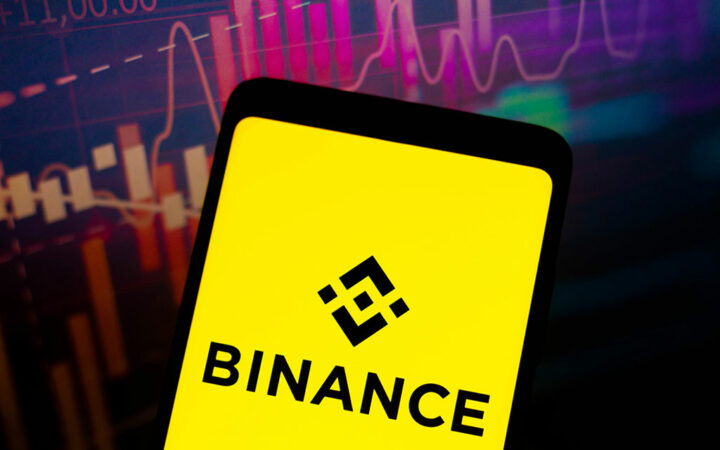This week, with much being made of Australia’s national blockchain roadmap and NEM’s attempts to right the ship, we thought it would be best to dedicate the column to an in-depth look at some of the recent roadmaps that have come out, including Bytecoin’s own.
The Australian Government Reveals a National Blockchain Roadmap and More Funding
Australia has just released a national blockchain roadmap with allocated funding in order to further development in this field and position Australia as a global leader in the blockchain industry. The 100,000 AUD, though a modest sum in itself, brings the government’s investment total in the project to over $1 million.
The Australian roadmap is focused on adjusting policy to create beneficial regulation, build skills and frameworks, and encourage innovation and investment. The most recent addition of funding will go towards covering Australia’s representation at Austrade’s Mission to Consensus in New York City in May, a landmark event for the blockchain industry.
Australia is among a handful of countries that have been using government resources to encourage the development of blockchain technology. Although the majority of blockchain projects have been produced in America, other countries around the world have been taking emerging roles in expansion and development.
Among the countries with a more hands-on approach is Estonia, where its capital, Tallinn, has been dubbed “the silicon valley of Europe.” Because of smaller demographics, countries like Estonia and even Australia have a considerable advantage when it comes to policy experimentation, which has resulted in higher levels of adaptation and integration.
As laid out in a press release from Australia’s Minister of Trade, Tourism, and Investment, the national roadmap hinges on the data that Australia gets back from CSIRO’s Data 61, a government firm exploring blockchain solutions for businesses in Australia.
In two previous studies, Data 61 elucidated the advantages that would come with an effort to encourage Australian businesses to expand into the blockchain space as well as the risks that would accompany such an expansion. Further findings by Data 61, specifically related to the benefits blockchain integration would have for businesses and for the government, are expected to further shape the national roadmap and dictate funding procedures.
Although, as we’ve mentioned, Australia is hardly the only country with blockchain ambitions, as one of the leaders of the pack, the measures they take and the data that informs those measures could have global repercussions.
Teetering on the Edge, NEM Gets Funding and Unveils New Roadmap
After announcing that they were on the verge of announcing bankruptcy, the NEM foundation has announced that they have received $8 million in funding, which will be used to cover their costs of operation, and has unveiled a new roadmap featuring a new approach to the way they will operate.
At the height of the bull market, the market capitalization for XEM, the token of the NEM platform, was estimated at over $15 billion. At the time, there were over 150 people on the payroll for NEM, a non-profit organization managing the development of the NEM cryptocurrency platform.
NEM’s roadmap featured three primary developments: funding, the Catapult Project, and the establishment of a transformation team. As far as funding is concerned, NEM was able to secure funding after requesting that 210 million XEM tokens (about $9 million) be released from reserves. The funding will come in stages, and the plan of action details how the first installment of funding will be dispersed.
The Catapult Project consists of a new blockchain engine, about which Jeff Mcdonald, the interim CTO of the NEM Foundation has declared, “the tech itself is doing things that no other blockchain has done before.” NEM is currently engaged in building a wallet for the Catapult Project.
With the new wallet users will be capable of viewing their XEM and Mosaic balances, adding multisignature contracts, and viewing account metadata. Additionally, with the new wallet users will be able to delegate harvesting contracts and even begin harvesting themselves.
NEM’s strategy going forward will be based around their transformational task force which they hope will be able to rework the foundation into a more stable and managerially effective enterprise. Right now the most pressing questions facing the company revolve around its solvency going forward.
Bytecoin Releases a New Roadmap After a Latest Amethyst Release
At Bytecoin we have also reassessed our plans for the foreseeable future and released a roadmap we believe will be able to maximize the full power of the Bytecoin platform.
We released our roadmap on the heels of the debut of the latest version of the Amethyst software. Amethyst 3.4.1. has improved the functionality of the platform, easing the interaction between software and the memory pool, thereby erasing lag times and decreasing the computational load for miners. This will allow miners to process more transactions in shorter periods of time.
A little further along the line, we are set to make official pull requests to the Trezor and Ledger software repositories. Pull requests are appeals to amend pre-existing code. Our developers have written an amendment that would enable Bytecoin support on the Ledger and Trezor wallets.
Following these requests, the Bytecoin mainnet hard fork is tentatively scheduled to occur. This will be a non-contentious hard-fork necessary to set a number of upgrades and software improvements in motion. The blockchain switch height will be scheduled, triggering the hard fork, once 90 percent of the blocks in a 720-block frame are submitted via the new version of Amethyst software.
For a more in-depth look at some previous hardforks, check out our previous column.
Later on in the year we are looking to refresh our desktop app with a new look and better functionality and to roll out our Bytecoin Gateway project. And beyond that we have Copper 3.6.0. on the horizon which will introduce a messaging feature to the platform, and Hidden Amounts, a feature that will enable users to hide the amount of funds used in their transactions.
Disclaimer: Coinspeaker is committed to providing unbiased and transparent reporting. This article aims to deliver accurate and timely information but should not be taken as financial or investment advice. Since market conditions can change rapidly, we encourage you to verify information on your own and consult with a professional before making any decisions based on this content.

Max was born at the end of 80s in Frankfurt, Germany. He studied engineering and telecom at university, and had internships in the US and UK. At the same time, he was coding on the side in С++ and scripting languages. After entering the Bytecoin team in 2016 as a technical support engineer, he rose through the ranks and now works as an integration engineer. Max is collecting vintage gaming consoles and loves English literature.





